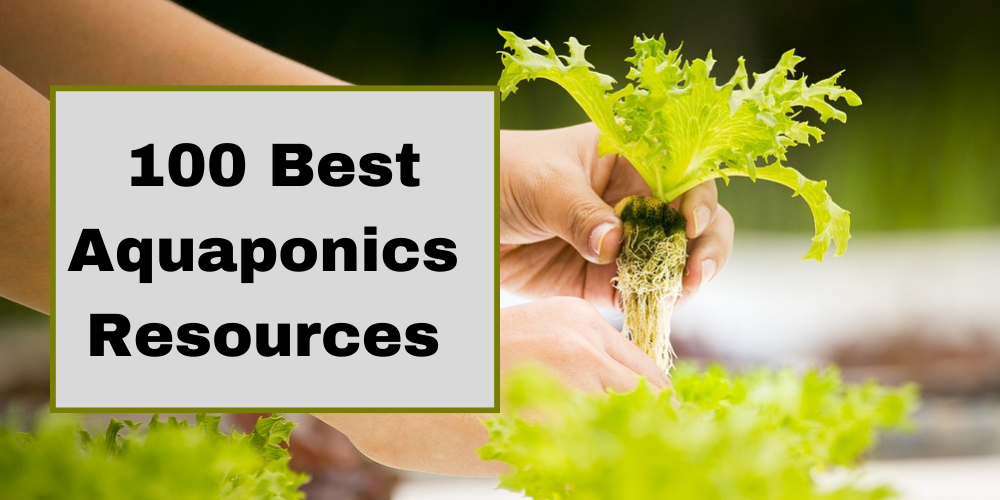Go Green Aquaponics Blog
Raising salmon in your aquaponics system is possible, given the proper climatic conditions and enough space to grow. Growing salmon in aquaponics systems can be challenging, but the long-term benefits could be worth the effort.
- May 20, 2024
Identify the symptoms of iron deficiency in your aquaponics plants and learn how to address the issue through various methods, such as adjusting pH levels and adding iron supplements through this article.
- May 20, 2024
Water quality is critical in maintaining a healthy aquaponics system. Discover the method for testing the water quality of your system, and how to interpret your results and take corrective actions to ensure your fish and plants thrive.
- May 20, 2024
Calcium deficiency can cause severe problems in your aquaponics plants. Learn how to recognize the symptoms of calcium deficiency, and how to address the issue through various methods, such as adjusting pH levels and adding calcium supplements. Discover how to maintain healthy calcium levels in your system and keep your plants thriving.
- May 20, 2024
Light is a requirement for plant growth, and scientific studies have found the effectiveness of using artificial light on plants. However, many new aquaponics growers are unsure if fish also need light. This leads to the question, do fish in aquaponics systems need light?
- May 20, 2024
A power outage can be a significant problem when it comes to your aquaponics system.
- May 20, 2024
Cauliflowers grow well in an aquaponics system, but it is a bit more challenging to grow than other vegetables. Cauliflowers have a definite growing need and can only be grown in one type of aquaponics system.
- May 20, 2024
Managing commercial aquaponics farm might be an enticing opportunity, but it requires detailed planning and understanding of your goals. This blog discusses everything you need to know about starting and managing a commercial aquaponics system
- May 20, 2024
Fish function as a nutrient provider for the plants. Therefore, selecting the right fish species to raise in your desktop aquaponics setup is essential because fish have specific living conditions.
- May 20, 2024
Pests can be a significant threat to your aquaponics plants, but there are various ways to control them. In this article, learn the common aquaponics pests such as aphids, spider mites, and whiteflies. Discover effective methods for controlling pests, including organic and chemical options, and how to prevent future infestations. Keep your plants healthy and thriving with these pest control tips.
- May 20, 2024
Only natural or organic fertilizers should be added to aquaponics systems. Keep in mind that you have the fish to think of, and adding chemical fertilizers might affect the fish and other aquatic animals negatively.
- May 20, 2024
As with any businesses, starting a commercial aquaponics system requires careful and extensive planning, commitment, a capable team and business plan to build and operate.
- May 20, 2024
Discover whether your system requires a water filter and how to determine the appropriate filter size and type for your setup. Ensure the health and longevity of your fish and plants with proper water filtration.
- May 20, 2024
Aquaponics is a great way to produce plants and fish in a sustainable way. However, one of the main challenges aquaponic growers faces is managing nutrient deficiency. Nutrient deficiency can lead to poor plant growth and low yields if not appropriately treated. This article will discuss the tips and strategies for managing nutrient deficiency in aquaponics systems.
- May 20, 2024
Aquaponics is a great way to produce your own food, and it can be done in colder climates by using cold-water fish. There are many benefits to raising fish in an aquaponics system. For one, fish is an excellent source of protein. They are also easy to care for and can be a fun addition to your backyard garden. Plus, fish waste is high in nutrients that plants love, making aquaponics a great way to recycle nutrients and grow your food at the same time.
- May 20, 2024
The easy answer to this question is “A combination of aquaculture (farming fish) and hydroponics (growing plants in nutrient solution).” But there is much more to aquaponics.
- May 20, 2024
Aquaponics is an excellent way to teach kids about the environment and sustainability. It also has many benefits for their health. This article will discuss what aquaponics is, why it is a good learning tool for kids and some of the best aquaponics systems for children. We will also provide tips on how to get your kids excited about aquaponics.
- May 20, 2024
Getting started with aquaponics can be overwhelming, with so many books, blogs, videos, and approaches to building your system. It’s important to develop your own understanding of what aquaponics is and understand its basic principles so you’ll know how to start and maintain your aquaponics system.
- May 20, 2024




















